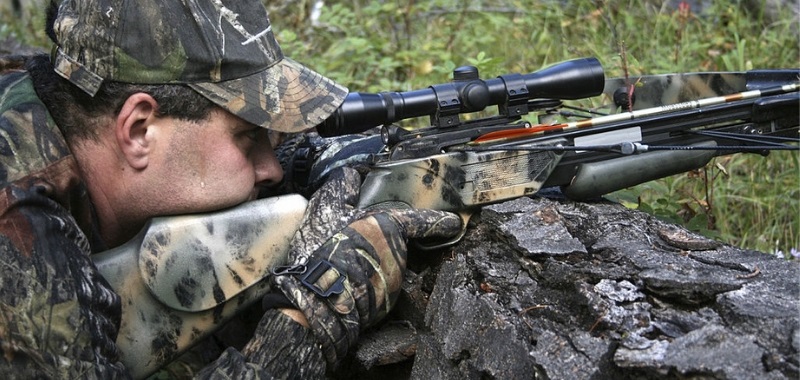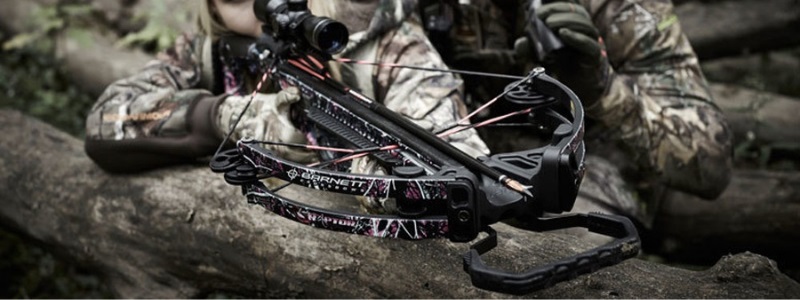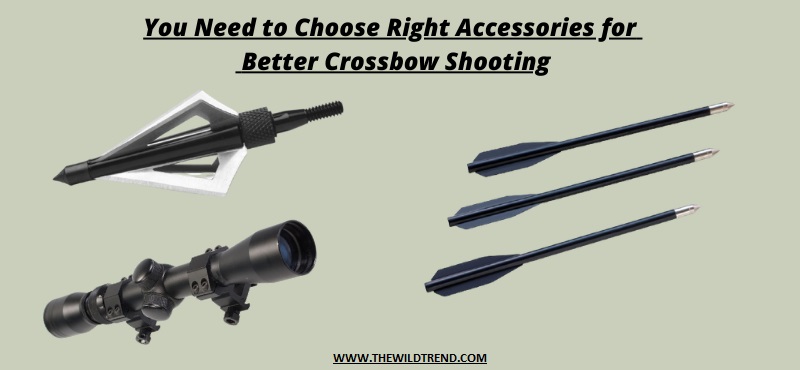
Crossbow hunting offers an exhilarating and rewarding outdoor pursuit that combines skill, patience, and a deep respect for nature. Far from the unwieldy and imprecise medieval versions, modern crossbows stand as high-performance sports and hunting equipment. With their impressive speed, precision, and considerable power, these contemporary marvels are capable of efficiently taking down even large wild animals.
In this guide, we’ll share 12 essential tips and insights to help beginners navigate the exciting world of crossbow hunting. From understanding the basic components of a crossbow to mastering essential techniques for a successful hunt, this resource provides a comprehensive overview to ensure a safe, enjoyable, and ethical hunting experience.
12 Tips for Crossbow Hunting for Beginners
Let’s see 12 crucial tips for crossbow hunting step by step.
1. Buy the best your wallet has
There is a significant distinction between an inexpensive entry-level crossbow and a high-end counterpart. The budget-friendly model may come at a lower cost, but it compromises on build quality, accuracy, and reliability compared to the pricier alternative.
For instance, you can acquire a comprehensive crossbow package, inclusive of the crossbow itself, a set of arrows and arrowheads, a telescopic sight, a jig, and a quiver, for as little as $100 to $200. However, a quality entry-level crossbow typically starts at $200 to $300. Investing in a higher-priced option ensures superior craftsmanship and performance, offering a more satisfying and enduring hunting experience.
2. Use a 120-pound crossbow to learn how to shoot

It doesn’t matter whether you practice target shooting or hunting; it is crucial to choose the right crossbow. To choose a beginner’s crossbow, you should consider the shooter’s age. There are crossbow models designed especially for children who want to improve their marksmanship while having fun. Adults who want to learn crossbow shooting can make do with a 120-pound throwing weapon. This quality device offers good precision and is easy to use.
3. Choose a higher pull weight model
A key distinguishing factor among various crossbows is the draw weight. Typically, superior and more powerful crossbows often commence in the 175 lbs range, although it’s important not to make sweeping generalizations. Exceptional crossbows with draw weights below 150 lbs also exist. In general, a larger draw weight often correlates with better performance.
Manufacturers of both crossbows and compound bows are always trying to improve their flight accuracy and characteristics. They make their crossbow faster to increase the weight of the draw. However, the crossbow should be able to accelerate the arrow to an initial speed of at least 300 feet per second so that you can hit your target precisely over long distances of over 90m.
4. Treat yourself to a good visor

Numerous budget-friendly crossbows are equipped with basic sights or scopes, making long-range aiming a challenging task. Opting for a multiple crosshair or multi-red dot sight proves to be a more effective choice for enhancing the ease of aiming. These sights are available in various magnifications, which provide versatility for different shooting scenarios. Moreover, advanced aiming devices often feature auxiliary lines or points to facilitate precision when shooting over greater distances.
While simple aiming devices may suffice for fixed distances, typically around 20 meters, the use of multi-red dot sights with multiple crosshairs enhances aiming accuracy and flexibility, especially for long-range shooting. For longer distances, try to compensate for the ballistic curve by holding it higher. However, Multi-range crossbow scopes are the most popular because they show you multiple illuminated points, each suitable for a specific distance.
5. Use arrows/bolts as good as possible
Very cheap price arrows are usually not truly well made, which is why they can break faster and also fly badly. So you should purchase arrows that have already received good ratings and are specially designed for crossbow shooting, as the crossbow bolts or arrows are shorter than bow arrows. Also, make sure that the nocks are suitable for crossbow arrows and not designed for compound bows.
Arrows can be made of wood, aluminum, carbon fiberglass, or a mixture of aluminum and carbon. Beginners are best to use aluminum arrows first, as these are cheap and robust. If you want to invest a little more right away, you can get carbon arrows. Carbon Arrow is the best seller among the crossbow arrows on the market. Because it is extremely light and flies surprisingly quickly.
6. Get the right accessories

A good purchase allows you to get several additional accessories such as bolts, spare parts, a carrying case, and more. A rope tensioning aid is essential for every crossbow hunter. Of course, you can also cock the crossbow by hand, but after 10-20 cocking times, you run out of the air and your hands hurt. Most of the tensioning aids are available for around $20 and up.
Another important must-have is the quiver. The bolts can be transported in it, saving space, gently and safely. The last thing you should do is find a suitable bag for your crossbow. There you have space for everything you need on the shooting range.
According to the Weapons Act, wielding a crossbow in public is allowed. But let’s be honest, you’d also look weird if a guy was sitting next to you on the tram with a crossbow. Do yourself and your fellow human beings a favor and get yourself a bag.
7. Only shoot where allowed
Remember, a crossbow is a weapon. Always be aware of this phenomenon and constantly keep in mind that such a bolt flies at over 300 km / h and can kill someone with ease. It is therefore best to ALWAYS go to the nearest shooting range or shooting club to train. Appropriate safety measures have already been taken there and you can concentrate fully on the shooting.
If you don’t have this option, you should shoot where there are no people. Large hills that are easily visible are always suitable. You can then place your target directly on the slope so that arrows that are not hit disappear into the ground and do not injure anyone.
8. Take care of your fingers

Never grasp the guide rail when shooting. The jumping tendon could injure or even break your finger. In addition, you should always hold your crossbow by the handle and make sure that your fingers cannot get in the way of the arrow or the string.
Just as your fingers are less able to withstand an impact with the string, your crossbow cannot withstand a shot without an arrow very well. With this so-called dry shot, all the energy from the tendon goes back into the limbs, which in the worst case can lead to the limbs breaking.
9. Get a feel for the trigger
Each crossbow has a unique trigger. You should have shot your crossbow enough times to know exactly when the arrow will be passed. You can also try shooting with and without gloves so that the difference can be clearly felt and you can find out what you like better.
10. Practice makes perfect
The saying “practice makes perfect” also applies to crossbow hunting. Shoot from a surface (table, trestle, sandbag, bipod, etc.) on which the crossbow rests. Use these exercises to practice shooting with precision and to get a feel for the trigger. When you know your crossbow well, you will get better results.
However, certain fundamentals remain unchanged.
11. Take care of your crossbow regularly
Crossbow is a mechanical device that requires regular maintenance to keep it working as it did on the first day. This means that you should check all moving parts like the CAM system and the tendons for wear. This is very important because enormous forces act on the individual parts with every shot.
The parts should be replaced at the first sign of tendon fraying or other unusual signs of wear and tear. With good care, of course, the repair effort is reduced, for example, the car. After every workout, clean everything well and lubricate the tendons with wax so that they stay supple. The guide rail lubricates regularly with oil or special care products after every 100 to 150 shots.
12. Relax the crossbow
Always remember to relax the crossbow after a day of hunting. This can be accomplished by using equipment called a bandage or shooting a practice arrow at a target. To prevent the string and the bow from breaking, it is imperative not to relax the bow manually by pulling the string dry without the arrow.
FAQs
What is the maximum distance to shoot with a crossbow?
Similar to many hunting crossbows, the practical maximum distance for an accurate and lethal shot typically hovers around 30 meters (100 feet). While it’s possible to achieve reasonable arrow grouping at greater distances, it’s crucial to acknowledge that beyond this range, the striking force notably diminishes. Furthermore, the risk of errors significantly rises as the meters increase, irrespective of the crossbow’s power.
Various factors increased the likelihood of missed shots beyond the optimal range. These include unexpected movement of the animal, shooting angle variations, trembling or nervous release, inaccurate assessment of distance, and anticipation of the shot. Acknowledging these variables is crucial, emphasizing the importance of responsible and ethical hunting practices to minimize the chances of errant shots.
How important is the choice of arrows?
The choice of arrows is important insofar as one wishes to get group shots, constant and with a good impact force. The ideal is to shoot with the original arrows. Otherwise, it is better to refer to the manufacturer’s manual to know the minimum weight required not to perform the equivalent of an empty shot, which could prove dangerous for the shooter and cause serious breakage to the gun.
Certain models of similar arrows could therefore be used. In this case, it is good to know the weight of the arrows and points that one usually uses to find among the choices offered in-store a model that does. Get as close as possible. It should be noted that a change in the arrows could lead to some readjustment of the telescope or the staff.
Is it better to have a crossbow with or without a pulley?
The choice of a pulley crossbow will therefore be more relevant to move it in the forest more easily. The main advantages of crossbows without a pulley are their simplicity and the ability to change the string yourself. For a hunter who does fine hunting, the ideal is a narrow model that takes up less space. However, the weight and power of the two types of crossbows are often equivalent in recent models. It is generally by supporting and handling different models that the final choice is made, according to individual tastes, budget, and needs.
Is it better to have fixed or retractable broadheads?
The choice between fixed and retractable broadheads in crossbow hunting ultimately depends on individual preferences and specific hunting scenarios. Fixed broadheads are known for their accuracy and reliability, as they maintain consistent flight paths once properly tuned. They offer excellent penetration due to their solid construction and larger cutting surfaces.
On the other hand, retractable broadheads, with their expandable design, can provide a more aerodynamic profile during flight and minimize the impact on arrow trajectory. Some hunters appreciate the larger wound channels created upon impact, thanks to the blades opening up. However, there is a consideration of potential mechanical failures, as retractable broadheads have moving parts that must deploy correctly upon hitting the target.
What is the proper way to cock a crossbow?
Follow the manufacturer’s instructions for your specific crossbow model. Many crossbows come with a cocking device for safety and ease. Always ensure that safety is engaged during cocking.
What should I do if I wound an animal but can’t recover it?
If you suspect a non-lethal hit, wait patiently and consult tracking tips. If recovery seems unlikely, report the incident to local wildlife authorities. Ethical hunting involves making every effort to retrieve wounded game.
Last Tips for Beginner Crossbow Hunters
The regular maintenance of the crossbow improves the initial speed of the weapon. These few gestures also make it possible to preserve the rope, and the beginner crossbowman will be able to see an improvement in his performance.
Although it is not uncommon for hunters to leave the crossbow armed for very long periods, this unpleasant habit must be corrected when you start crossbow hunting. In fact, keeping the string of a crossbow in firing position for too long is not only dangerous, but it risks damaging the branches of the bow. Because the crossbow mechanism is not designed to stay in the firing position for too long.
Beginner hunters who use small crossbows should regularly check the condition of the string, and should not forget to replace the wire edge. To avoid damaging the crossbow when the string suddenly breaks during shooting exercises, it is best to consider changing the old string. To get a hunting crossbow for beginners, you can read this article on our site: 10 Best Crossbow Under $400.
Hope this article provides all the information you are looking for. If you have any questions, leave a comment in the section below and we’ll answer them.